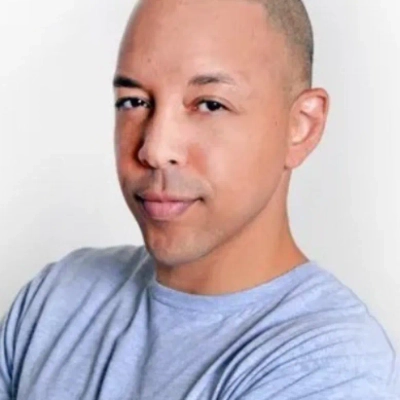Creating an Inclusive Workplace: 15 Employee Recognition Strategies
Creating inclusive workplaces requires strategic employee recognition that values every team member’s contribution. This article presents practical, evidence-based strategies developed through collaboration with workplace inclusion experts. The approaches focus on building systems that recognize diverse contributions, create lateral acknowledgment opportunities, and connect individual roles directly to organizational success.
- Recognize Effort Based on Clear Standards
- Create Opportunities for Lateral Recognition Flow
- Empower Teams to Recognize Each Other
- Structure Recognition Processes for Diverse Contributions
- Connect Every Role to Customer Outcomes
- Set Transparent Expectations for All Contributions
- Celebrate Actions Rather Than Personalities
- Value Impact Over Volume Through Peer Recognition
- Distribute Monetary Recognition Evenly Among Teams
- Build Systems That Value Every Contribution
- Tailor Recognition to Individual Role Success
- Use Data to Ensure Recognition Balance
- Personalize Recognition to Match Individual Preferences
- Implement Peer Nomination Across Multiple Channels
- Honor Original Ideas Across All Levels
Recognize Effort Based on Clear Standards
At Achilles Roofing and Exterior, I’ve learned that employee recognition has to be rooted in fairness and authenticity, otherwise it loses meaning. In roofing, every role counts—whether it’s the foreman leading a crew, the installer sweating it out on a hot Houston rooftop, or the office staff keeping schedules and communication on track. If you only shine the spotlight on the loudest or most visible workers, you risk overlooking the ones who quietly hold everything together. That’s why our recognition system is built on effort, accountability, and impact, not just results on paper.
One way we ensure this is by tying recognition to clear standards everyone understands. For example, when a roofing crew finishes a tough job ahead of schedule with zero call-backs, it’s not just the project manager who gets credit. We make sure every member of that crew, from the lead roofer down to the helper carrying shingles, is acknowledged in front of their peers. This way, recognition doesn’t feel selective—it feels earned.
A good example of this in action happened last summer. We had a stretch of brutal heat in Houston, and one of our crews managed to complete a large residential roof replacement without a single safety incident. Instead of just praising the foreman, we highlighted the entire crew during our monthly safety meeting. Each member received a bonus and we made it clear why: they looked out for each other, worked smart, and didn’t cut corners. That recognition boosted morale across all teams because everyone could see that effort and teamwork were valued equally.
For us, inclusivity means no role is too small to recognize. Equity means the praise matches the contribution, not the title. Over time, this has created a culture where every employee knows they’ll be seen and appreciated when they go the extra mile. And in a business as demanding as roofing, that sense of respect and fairness is what keeps good people with us long-term.
Create Opportunities for Lateral Recognition Flow
Early in my journey as a founder, I made the mistake of recognizing only the “loud wins”—the deals closed, the big launches, the milestones that everyone could see. What I overlooked were the quieter contributions: the developer who fixed a small bug that prevented a crisis, or the account manager who kept a client relationship strong behind the scenes. Over time, I realized that this kind of recognition wasn’t truly equitable—it unintentionally favored roles where success was more visible.
At Nerdigital, we wanted to change that. One shift we made was introducing a peer-recognition system. Instead of leadership being the sole voice of recognition, every team member could call out someone else’s contribution, no matter how big or small. It created a balance, because suddenly the spotlight wasn’t just on the “headline” achievements but on the small, everyday actions that kept projects moving forward.
I’ll never forget one example: a junior designer was recognized by a peer for creating internal documentation that made onboarding new hires easier. It wasn’t something that would have made it into a quarterly review, but it had a ripple effect across the team. By highlighting it, we not only celebrated that individual but reinforced the idea that value doesn’t always look like revenue—it can be making someone else’s job easier.
The key lesson for me has been that inclusivity in recognition is about designing systems where everyone has the opportunity to be seen. When recognition flows laterally and not just top-down, it builds a culture where people feel valued for who they are and how they contribute, not just for the most visible outcomes.

Empower Teams to Recognize Each Other
I used to think that giving a bonus or a formal “employee of the month” award was the right way to do employee recognition. But I realized that it wasn’t inclusive. It was just a way for me to feel good about myself, and it missed all the small, but crucial, contributions that keep our mission running every day.
The biggest change we made was to move from a top-down recognition system to a peer-to-peer one. We created a “kudos” system where anyone on the team can publicly praise a colleague for their work. We do it in our weekly all-hands meeting. The recognition isn’t from the boss; it’s from a person’s peers, and that’s what makes it so powerful.
The most powerful example was when a new, quieter staff member received a shout-out from a veteran clinician for a small, but crucial, thing they did for a client. The recognition wasn’t from the boss; it was from a respected peer. It completely changed the dynamic and made that new person feel seen and valued in a way that I never could have done.
My advice is simple: the most inclusive and equitable recognition is the one that comes from a person’s peers. The most effective way to build a culture of trust and respect is to empower your team to recognize each other. It’s a leader’s job to create a space where that can happen.

Structure Recognition Processes for Diverse Contributions
I make it a point to build recognition programs that celebrate a variety of contributions, not just the high-visibility wins. For example, at my previous company, we introduced a monthly “Impact Awards” system where employees could nominate peers based on teamwork, innovation, or mentorship. To keep it equitable, we anonymized the nominations during review and rotated the committee evaluating them. This ensured that quieter team members, who might not self-promote, received acknowledgment for their efforts. I remember one instance when a junior developer, who usually worked behind the scenes on critical infrastructure updates, was recognized—her manager said it boosted her confidence and visibility across the team. It taught me that thoughtful processes and structured recognition can make all employees feel seen and valued.

Connect Every Role to Customer Outcomes
At our company, recognition is not about highlighting a few individuals but ensuring every team member understands that their work matters. We focus on customer outcomes and trace them back to different roles so that everyone can see how they contribute to success. This approach ensures that recognition is meaningful and inclusive rather than selective.
One example is when our warehouse staff noticed a recurring packaging flaw and suggested a simple solution. Their improvement reduced shipping damages and customer claims. We held a small event to thank them and explained the measurable impact of their work. By showing that every role has value, we ensure recognition extends beyond technical or sales contributions. This approach strengthens teamwork and reinforces that each person’s efforts drive our shared success.

Set Transparent Expectations for All Contributions
Inclusive recognition is the establishment of clear and transparent expectations around what is considered recognized and ensuring that roles participating in a collective event are valued equally for recognition purposes. Not everyone wants recognition in the same way, so I try to find a mediator between public recognition and private personal recognition.
For instance, I managed a team of virtual assistants and equally recognized the client-facing win of securing meetings and recognized the assistant behind the scenes gathering background CRM data. Through public recognition, I provided an equitable manner of recognizing every contribution and effort to the team, whether visible to the client or not, that carried equal weight in relation to every recognition conversation.
In the end, in the context of contribution recognition, it is most important to be consistent and recognize it from all levels so everyone is, or feels included.
Celebrate Actions Rather Than Personalities
We recognize actions, not personalities. Some people are loud about wins, others are quiet, but both deserve the same spotlight. To keep it fair, we built a system where any employee can nominate a coworker when they see them going above and beyond.
One example was a newer tech who wasn’t outspoken but always stayed late to help others finish their routes. His peers nominated him, and we recognized him at our team meeting. That moment showed the team that effort, not volume, gets noticed. It set the tone that everyone’s work counts.

Value Impact Over Volume Through Peer Recognition
At Ranked, we make employee recognition inclusive by valuing impact over volume. Some people are loud contributors, others make quiet but vital moves, both deserve acknowledgment. We built a culture where recognition is peer-driven, not just top-down, so every voice has the chance to spotlight others.
One example: during our app redesign, we created open forums where teammates could recognize peers for contributions, whether in engineering, design, or community outreach. It leveled the field, recognition came from across the company, ensuring everyone’s work was seen and celebrated.

Distribute Monetary Recognition Evenly Among Teams
We are always very careful about when we recognize employees in any ways that involve things like gifts. People are going to feel extra unappreciated if they see their coworkers constantly being taken out to lunch or getting gift cards. So, you want to make sure that everyone is getting that kind of monetary recognition pretty evenly. We try to reserve those things for circumstances like birthdays or for entire teams rather than individuals in order to keep things equitable.

Build Systems That Value Every Contribution
“The most powerful recognition is the kind that makes every team member feel their contribution is visible and valued.”
Recognition only works if it’s genuine and fair, so we’ve built systems that don’t just reward the loudest voices or the most visible wins. We make sure recognition is peer-driven as well as leadership-driven, so contributions from every corner of the organization are seen. For example, when we launched a peer-nomination program, we discovered that some of our most impactful work was being done quietly behind the scenes—work that might have otherwise gone unnoticed. By celebrating those moments equally with high-visibility achievements, we’ve created a culture where everyone feels their impact matters.

Tailor Recognition to Individual Role Success
By understanding what you’re rewarding and not just making those rewards be based on the same achievements each time.
You need to take a bespoke approach based on success milestones for individual team members, so that you’re tracking progress and can reward appropriately based on the role and how success is defined in that role, not just for the business as a whole.

Use Data to Ensure Recognition Balance
We measure equity in recognition by regularly auditing who receives acknowledgment over time. We review records to ensure that recognition is not concentrated among a few familiar faces. This helps us understand whether praise tends to favor extroverts, senior staff, or specific departments. One audit showed that our marketing team received acknowledgment more frequently than operations. To address this, we created recognition spotlights that focused on support roles.
When operations staff improved workflows, we made sure their contributions received equal attention. Auditing revealed biases we had not noticed before and allowed us to take action. By using data to guide recognition, we built fairness and inclusivity into our processes. This approach ensures that recognition is consistent, balanced, and reflects the contributions of the entire team rather than leaving it to chance.

Personalize Recognition to Match Individual Preferences
I make sure employee recognition is meaningful and fair by considering each team member’s unique contributions and what motivates them. Just like I customize window treatments to fit a client’s style and space, I tailor recognition so it resonates personally. It’s important to celebrate both high-visibility achievements and the behind-the-scenes work that keeps everything running smoothly.
One way I do this is by combining peer-nominated awards with leadership acknowledgments. For example, during a major installation at the Lotte New York Palace, both the design team and the installation crew worked under tight deadlines. We recognized everyone from the lead designers to the team members handling technical details so no contribution went unnoticed.
I also make recognition part of our everyday routine. Weekly team check-ins give us the chance to highlight successes and problem-solving efforts in real time instead of waiting for a big event. This keeps appreciation consistent and ensures everyone feels seen. I pay attention to how each person likes to be recognized. Some enjoy a verbal shout-out, others a written note, or even a small celebration. By giving options, I make sure recognition feels genuine and personal.
At the end of the day, the goal is to build a team where everyone feels valued and included. By recognizing contributions thoughtfully and equitably, I strengthen our team just like I create custom window treatments that perfectly fit every client’s home or office.

Implement Peer Nomination Across Multiple Channels
We ensure recognition is inclusive by implementing a weekly ’employee spotlighter’ program where team members themselves nominate colleagues who demonstrate our core values, rather than having recognition flow only from leadership. This peer-to-peer approach helps capture contributions that might otherwise go unnoticed and creates multiple channels for recognition across the organization. We supplement this with small bonuses for demonstrating our values and conduct quarterly team reviews to ensure we’re celebrating achievements equitably across all departments and roles.

Honor Original Ideas Across All Levels
We ensure inclusive recognition by focusing on identifying and honoring the true sources of ideas rather than just celebrating the most visible team members. In our organization, we’ve implemented a process where we quickly explore employee suggestions and always recognize the original source of successful ideas. This approach ensures that recognition is based on actual contributions rather than factors like seniority or position visibility. We find this creates a culture where people from all levels and backgrounds feel valued for their input.



